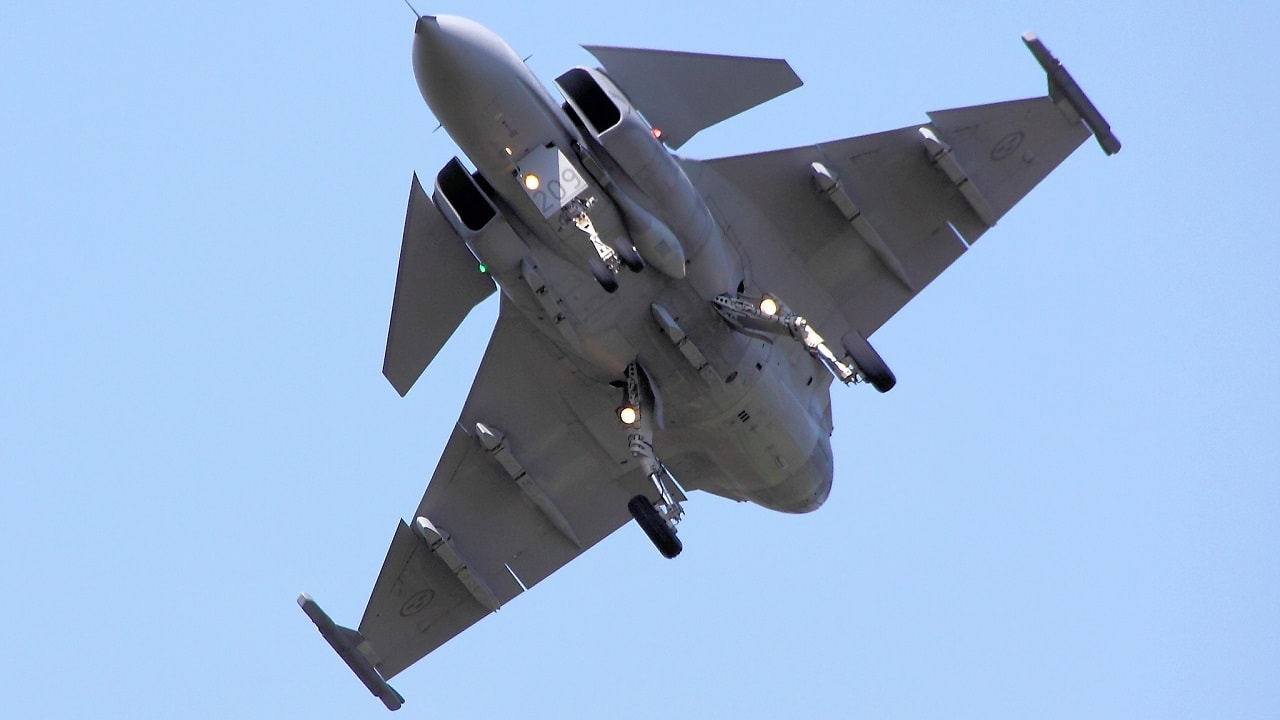When the United States Air Force’s B-52H Stratofortress flies over the skies of Europe the massive bomber is often escorted by a mix of friendly aircraft that include the F-15, F-16, F-35, and Eurofighter Typhoon. Last month, however, during a joint exercise with the Swedish Air Force, one of the American bombers was escorted by a pair of Saab JAS 39 Gripen fighters.
The drill, which took place prior to Russia’s unprovoked invasion of Ukraine, was part of a recurring exercise pattern in line with the established cooperation between the United States and Sweden. Stockholm had said that participation in such exercises is aligned with the country’s defense policy – and while the Scandinavian nation has long maintained a position of neutrality, it has moved ever closer to joining NATO.
If that happens and Sweden joins NATO, the United States Air Force’s flyboys and fly girls can likely expect to see a lot more of the highly capable JAS 39 Gripen.
Flying High Over Hungary Too
However, some B-52 pilots may already be familiar with the aircraft – as it is currently operated by the Hungarian Air Force where it has been used in past bomber escort drills. Last May, a B-52H, assigned to the 96th Bomb Squadron, Barksdale Air Force Base (AFB), Louisiana, and operating out of Moron Air Base, Spain, was escorted by a Hungarian JAS 39 during a NATO patrol sortie.
Video of the flight was even posted to YouTube.
Earlier this month, a Hungarian Gripen was also scrambled following a “bomb threat” on a Turkish commercial plane flying from Moscow to Istanbul. After receiving the threat over Polish airspace, NATO’s Joint Air Operations Center dispatched Hungarian Air Force Gripen fighters to assist. The Turkish-flagged plane aircraft was escorted to the Romanian border. Before returning to the Kecskemét base, the JAS 39 Gripen aircraft continued to conduct a patrol of Hungary’s airspace.
Hungary first leased the JAS 39 Gripen in 2001, and the aircraft has since received several upgrades, DefenceAviationPost reported. The Gripens’ Puma squadron has been responsible for monitoring Slovenian airspace since 2014, and there are presently 12 aircraft in operation that are mostly committed to protecting the skies over Hungary.
Sweden’s Sleek Fighter
The JAS 39 Gripen (Griffin) was initially designed to replace the variants of the Saab 35 Viggen and Saab 37 Draken combat aircraft. Development began in the late 1970s when the government in Stockholm began to explore the development of an aircraft that could be capable of fighter, attack, and recon missions. After evaluating a number of existing foreign aircraft including the American F-16 and F-18 fighters, the Swedish Parliament decided in June 1982 to move forward with the Swedish project.
The development of the Gripen was part of a joint effort by an industrial consortium that consisted of Saab, Saab Microwave Systems (formerly Ericsson), Volvo Aero Corporation, Saab Avitronics and FFV Aerotech, the Gripen was the first Swedish multirole combat aircraft – capable of conducting interception, ground-attack, and reconnaissance. The single-engine, multirole-combat aircraft was designed with a single pilot, but the B and D versions were also developed featuring a longer canopy for a crew of two.
The fourth-generation multirole fighter was first flown in December 1988, and it entered operational service with the Swedish Air Force in 1997. A total of 204 aircraft in three batches had been ordered by Swedish Air Forces, which to date has taken delivery of 74 aircraft.
A total of 158 Gripens were produced as of 2016, and it was exported around the globe. Current operators include Brazil, the Czech Republic, Hungary, South Africa and Thailand, while the United Kingdom’s Empire Test Pilots’ School also operates Gripens in a training capacity.
Now a Senior Editor for 1945, Peter Suciu is a Michigan-based writer who has contributed to more than four dozen magazines, newspapers and websites. He regularly writes about military hardware, and is the author of several books on military headgear including A Gallery of Military Headdress, which is available on Amazon.com. Peter is also a Contributing Writer for Forbes.

